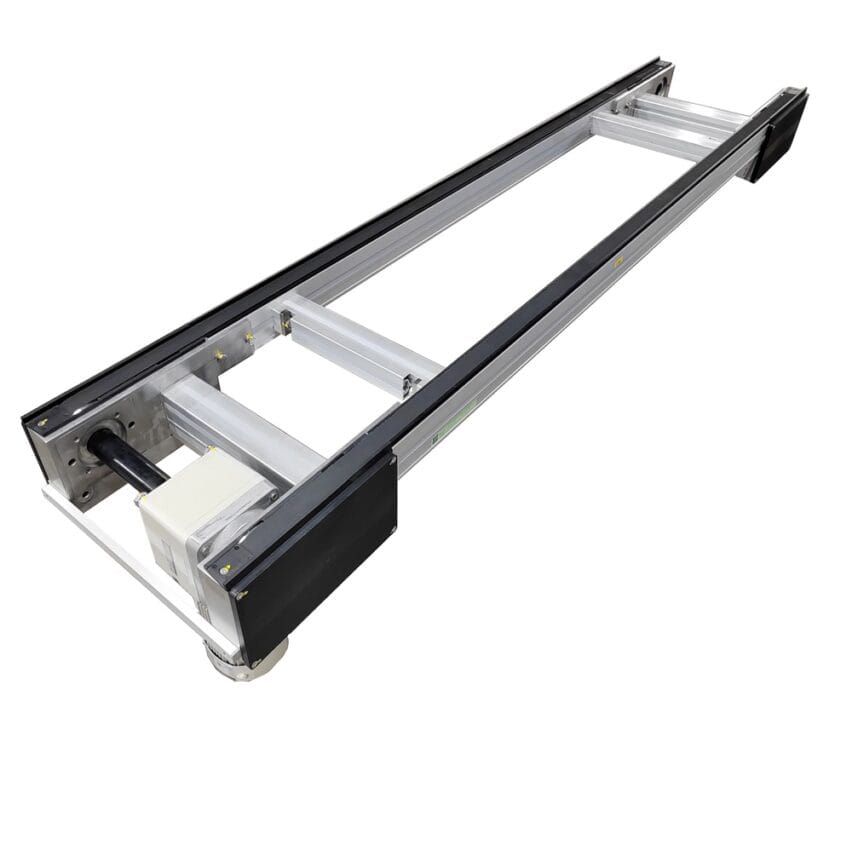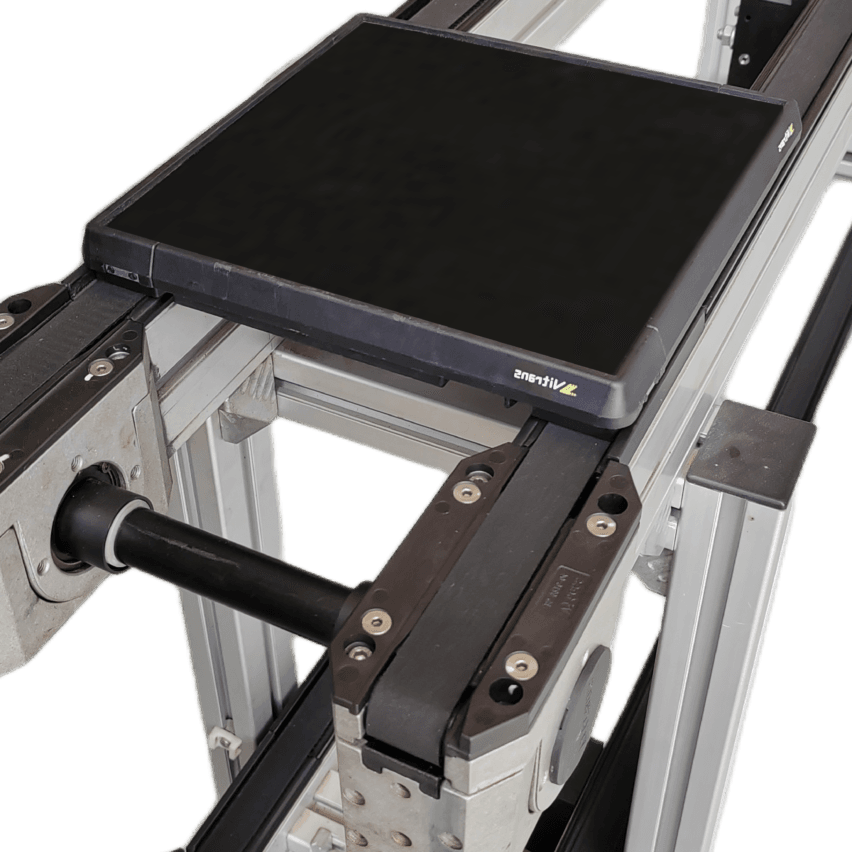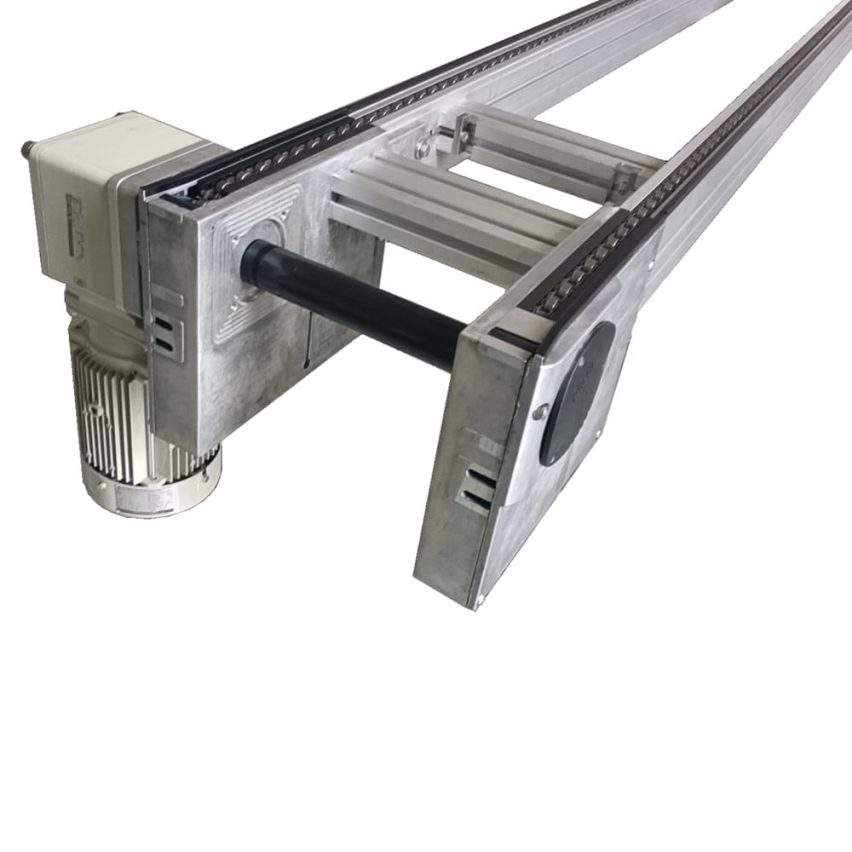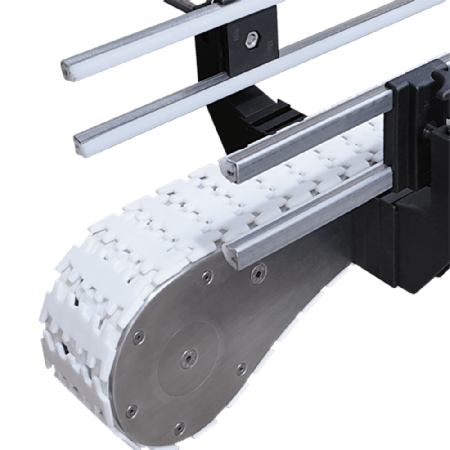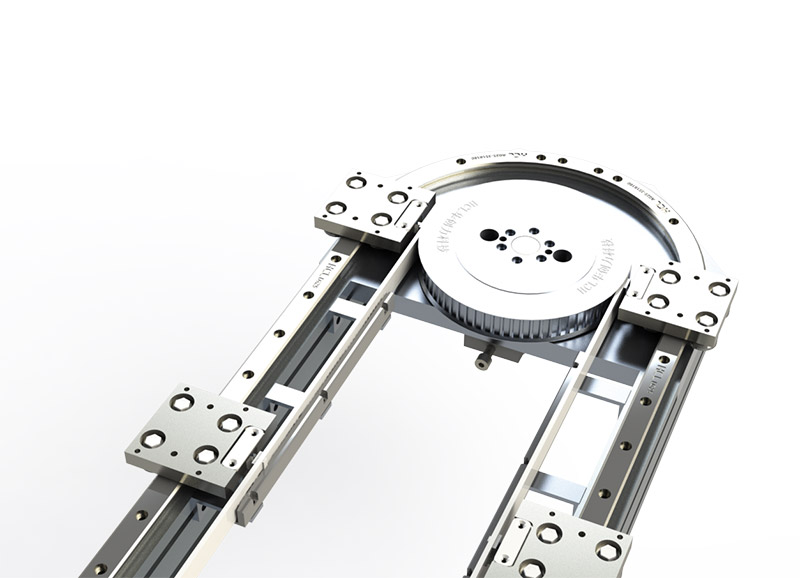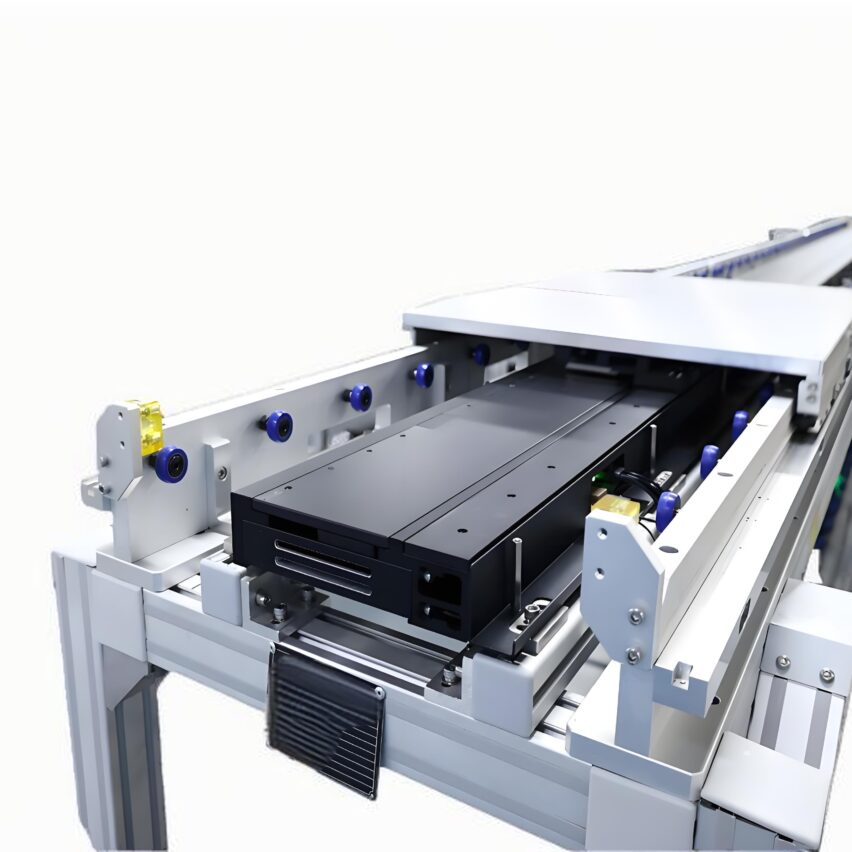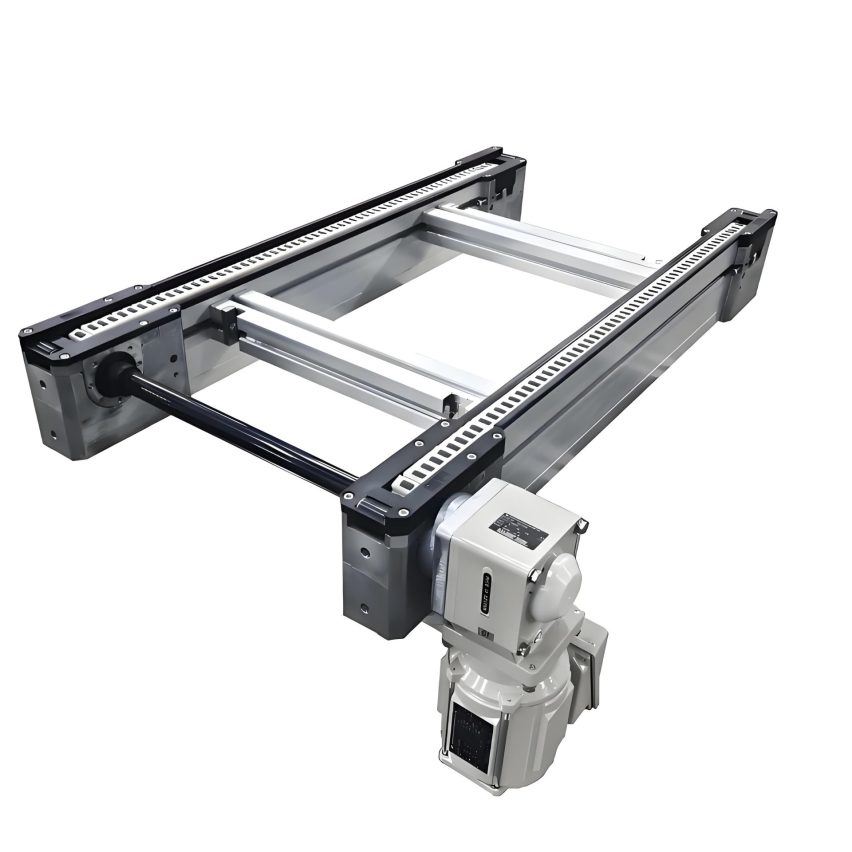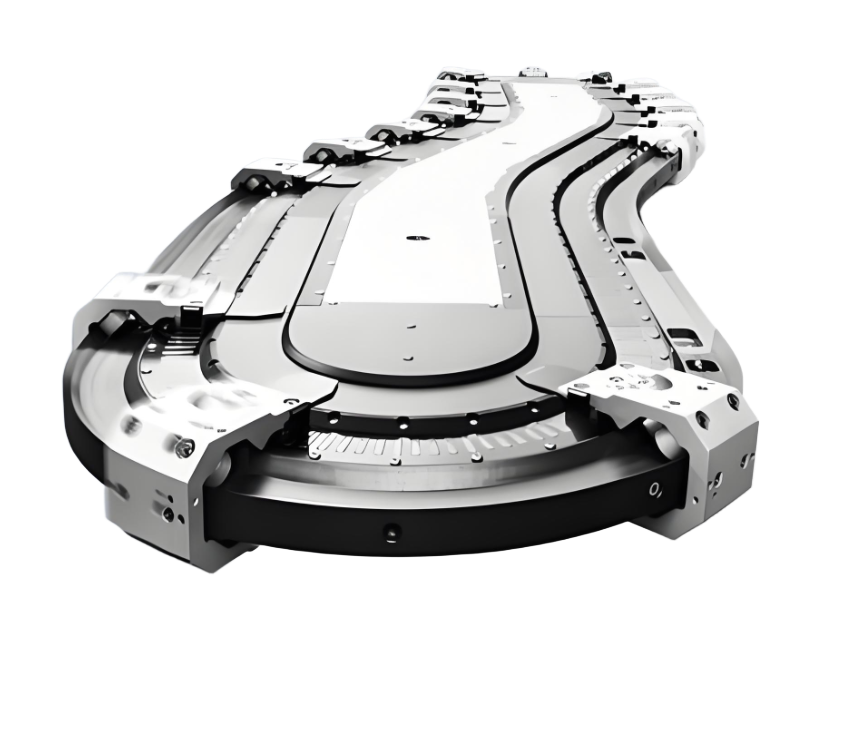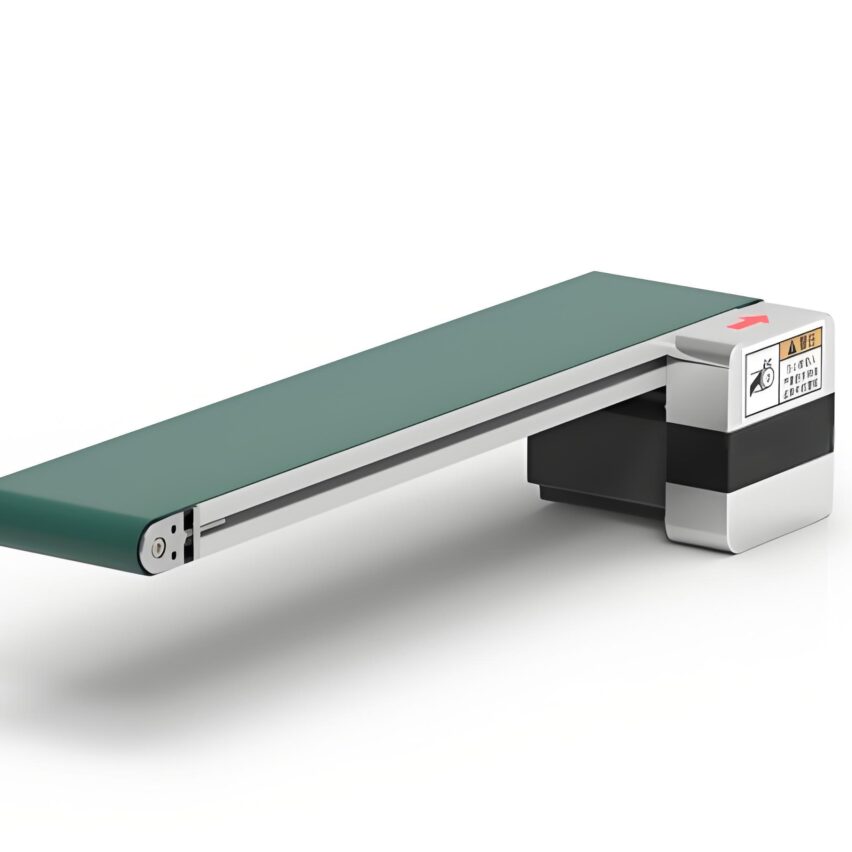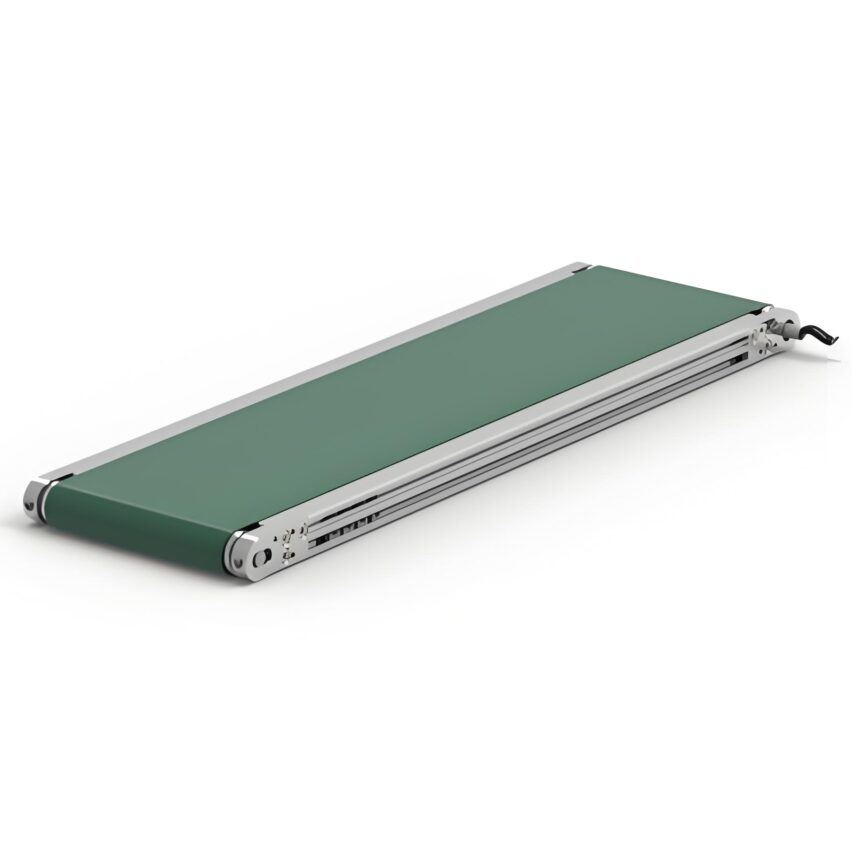One.Core principle: velocity superposition driven by diameter differences
The core mystery of the Triplex Metal Multiplier Chain is thatDesign of diameter difference between roller and roller. Its structure contains two sets of key components:
- Internal chain roller(diameter d): contact with the guideway provides the base travelling speed
- External Chain Roller(Diameter D): Engagement with the roller generates additional linear velocity.
When D > d (typical ratio D = 2d), the additional velocity of the roller rotation (V₂) is superimposed on the overall chain movement velocity (V₁) to form a compound speed increase effect. According to the kinematic formula:
Total velocity V = V₁ × (1 + D/d)
For example, when D=2d, the speed of the work plate can be up to 3 times the speed of the chain, realising the industrial wonder of "slow chain, fast car".
This design allows the tooling plate to move quickly (e.g. 6 m/min) in the unloaded section, and then slow down to the required speed for assembly by means of a stopper after entering the work station, creating a "Fast Forward - Slow Work"Cycle, productivity improvement of 200% or more.
Two.Structural Analysis: Precision Synergy of Metal Components
The Metal Speed Chain System consists of five core components that form a precision transmission network:
- Multiple speed chain set
- Carburised steel, hardness up to HRC58-62, life expectancy over 50,000 hours
- Three rows of rollers (load + guide + drive rollers) for increased stability
- Guideway systems
- Anodised aluminium track with low friction coefficient of 0.15
- Modular splicing design, supports 20 layouts such as L-type/U-type, etc.
- Servo drive units
- Japan imported harmonic reducer, start-stop precision ± 0.1mm
- Frequency conversion control to achieve 2-20m/min stepless speed regulation
- Intelligent carrier system
- Embedded RFID chips in the workpiece plate, real-time transmission of workpiece information to the MES system.
- Pneumatic quick-change fixture supports 3-second model changeover.
- Constant Tension Mechanism
- Gravity tensioner automatically compensates for chain elongation of 0.5-2%
- Overload protection torque limiter prevents overload breakage
Technical Highlights: Metal chain maintains its strength in high temperature environment (150℃+) by hardened alloy steel material, the load carrying capacity is 4 times higher than engineering plastics.
Three.Industrial scenarios: from automotive production lines to medical devices
Performance Breakthrough in Heavy Duty
- automobile manufacturingTesla Model Y production line uses steel triple-speed chains, 90-second modular assembly of doors, seats and dashboards, and mixed line production compatible with fuel/electric vehicles
- Heavy machineryEngine crankshaft conveying scenarios, single chain loads up to 200kg+, and the whole line loads more than 2000kg.
Irreplaceability in the precision industry
- Assembly of medical equipmentFood-grade stainless steel chain through GMP certification, running jitter <0.1g, to protect the insulin pump precision assembly
- 3C Electronics ManufacturingStatic dissipative chain (surface resistance 10⁶-10⁹Ω) for Apple AirPods production line, suitable for class 10,000 clean room.
Examples of industry pain point solutionsAfter the adoption of metal speed doubling chain in an automobile factory, the hourly conveying capacity was increased by 200% and the failure rate was reduced by 70%, while the energy consumption of traditional conveyor belt under the same load was higher by 30%.
Four.Technical Challenge: Accuracy Decay and Intelligent Compensation
The three main failure mechanisms of metallic structures
- Eccentric wear of rollers
Ellipticity deviation >0.5mm after 100,000 times of operation, triggering ±2.5mm jittering of the work plate. - Pitch Stretch
When the tension is not adjusted in a quarter, the chain elongation exceeds 0.3%, and the risk of jumping teeth increases by 40% - harmonic resonance (physics)
8-12Hz vibration frequency (common in press shops) leading to structural fatigue cracks
Innovative Solutions
- Intelligent monitoring system
Strain gauge + RFID real-time feedback load data, dynamic adjustment of motor torque - Self-healing coating technology
Nano-ceramic coating increases chain wear resistance by 90% and extends maintenance-free cycle to 3 years.
personal viewpointMetal speed chain's precision degradation is essentially a dynamic problem. In the future, it is necessary to break through the "sensing-control" closed-loop time delay and realise microsecond vibration compensation - this will be the core competitiveness of the next-generation intelligent chain.
Five.Future Trends: Material Revolution and Digital Twin Convergence
- Lightweight Breakthrough
Carbon fibre composite roller test data: weight reduction of 60% compared to steel, energy consumption down 22%, but the cost is three times higher. Trial has been launched in aerospace field. - digital twin operations and maintenance (DTOM)
Load-speed model accurately predicts life: when the chain speed is increased from 10m/min to 15m/min, the system automatically warns of the risk of over-temperature in the bearings. Unplanned downtime was reduced by 80% after application in a factory. - Maglev technology grafting
The magnetic levitation multiplier chain in the test achieves 5 times the speed (20m/min) with zero mechanical wear and the electromagnetic force counteracts the 90% load, but consumes up to 6 times the energy of conventional ones.
Exclusive data: The global triplex chain market will grow to $4.2 billion in 2025, with lightweight products growing at a CAGR of 17.8%, while the penetration rate of smart diagnostic features will exceed 60%.
Self-questioning on core issues
Q1: Can metal triplex chains replace traditional conveyor belts?
existHeavy Duty + High Speed + Accurate AccumulationIt has absolute advantage in the scene. Automotive assembly line test shows: metal speed chain than the belt line energy-saving 30%, changeover time from 2 hours to 5 minutes. However, for simple linear conveying, traditional conveyor belts still have cost advantages.
Q2: Why does the medical industry choose stainless steel multiplier chains?
hinge onBiocompatibility and cleanliness316L stainless steel is GMP certified with surface roughness Ra≤0.8μm, which inhibits bacterial growth. While galvanised steel chain has a life span of less than 1 year under disinfectant erosion.
Q3: Does overloading the 30% really cause a spike in failures?
Experimental data confirms that the probability of roller bearing breakage increases by 50% when the load is exceeded by 30%. The root cause is thatMetal fatigue limit broken-When the stress exceeds the yield strength of the material by 70%, microscopic cracks grow exponentially. It is recommended that additional electronic scales + AI vision dual redundancy overload protection be installed.

